If you’re thinking about installing a heat pump in your home it is important to know about the different types of systems on the market, their costs and benefits, in order to find the one which is right for your home and energy needs.
Heat pumps are becoming an increasingly common addition to Irish homes as an energy efficient heating alternative, both among new constructions and for homeowners looking to reduce their heating bills while also reducing the carbon footprint of their homes.
Air to Water Heat Pumps are the commonly used variety of domestic heat pumps in Ireland with their small footprint and lower costs than other systems.
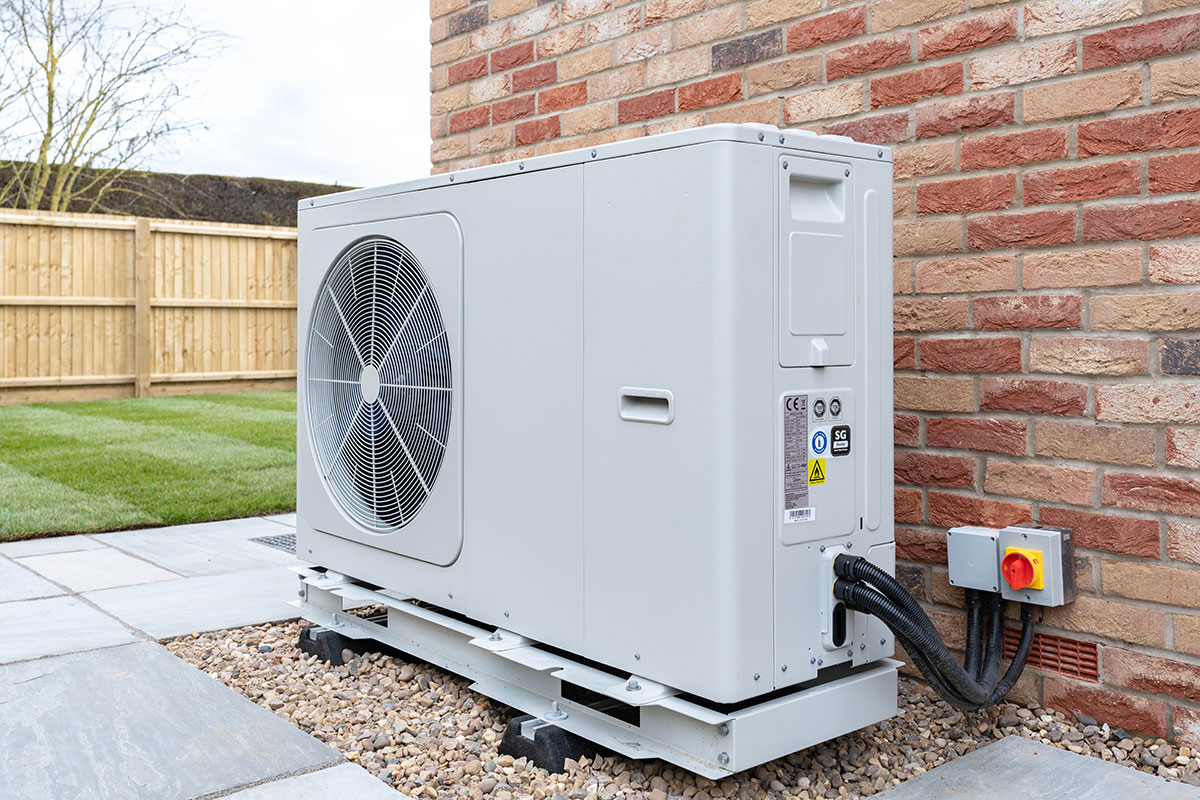
The key takeaways:
Table of Content
How Does an Air to Water Heat Pump Work
A heat pump works by taking heat from an external source and raising its temperature to something usable in your home. Air Source Heat Pumps take that energy from the outside air to put it to use inside your property.
This is then used to heat another medium. With an air to water heat pump that medium is the heat from the outside air and transferred through the system to produce hot water.
The outdoor fan unit draws in air, from which heat is absorbed by the refrigerant and compressed to raise it to a usable temperature. The refrigerant is cycled through the system, with the heat absorbed.
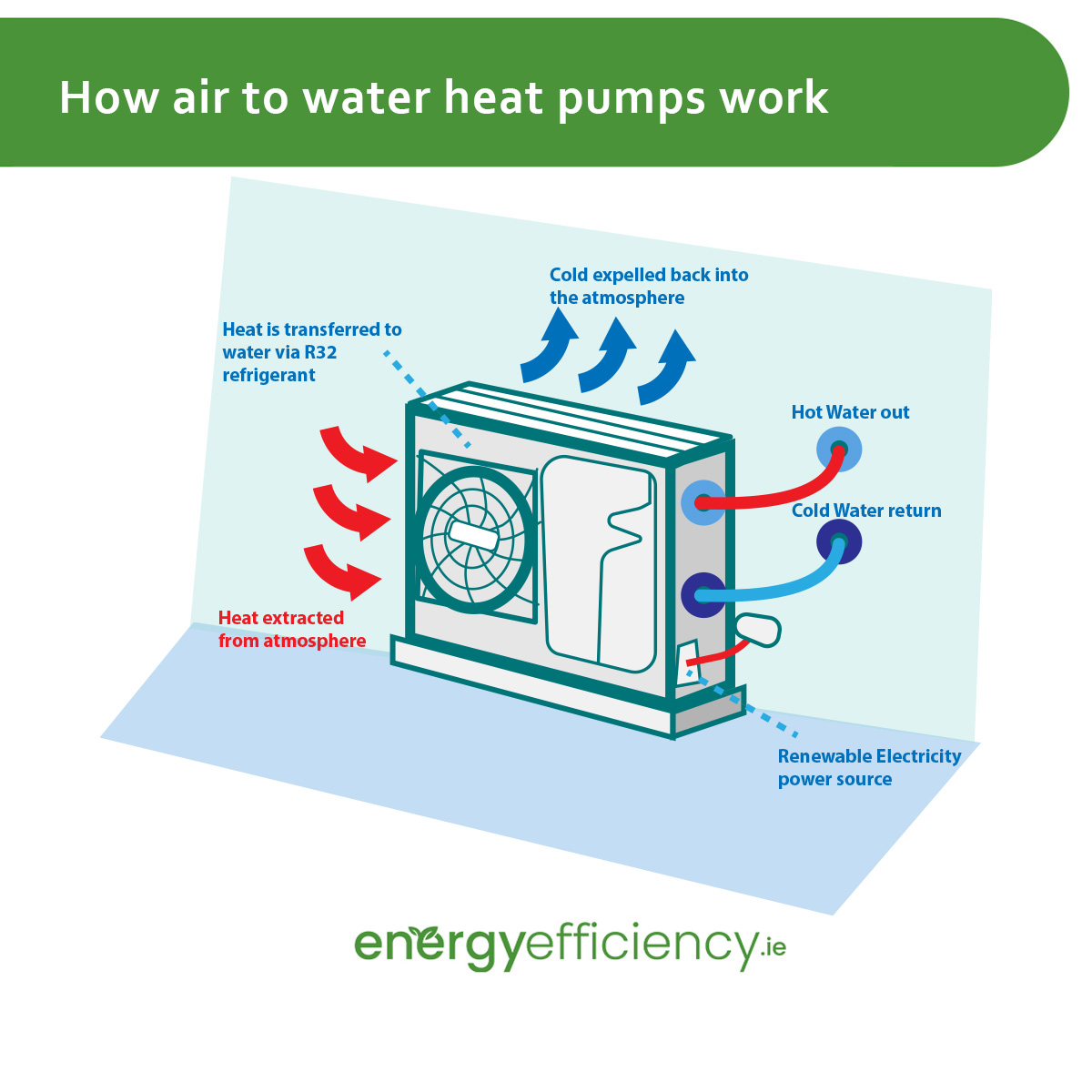
What is an Air to Water Heat Pump For
There are three main uses for an air to water heat pump, heating the internal space of your home when it is cold, cooling the same space during the summer, or creating hot water for use in showers and taps.
How Efficient Are Air to Water Heat Pumps
Heat Pumps are far more efficient than oil and gas boilers in terms of how much energy they produce for what they use to operate. As a rough rule of thumb, heat pumps create 3 – 4 units of heat for every unit of electricity used to run them. Some top-of-the-line models on the market now have efficiency rates of up to 500%.
This is far more efficient than any oil, gas, or electric boiler, which will typically have an efficiency rating of 90-99% with modern models.
As heat pumps typically circulate lower-temperature water than traditional heating systems, they are at their most efficient when working with large surface areas such as bigger radiators or an underfloor heating system.
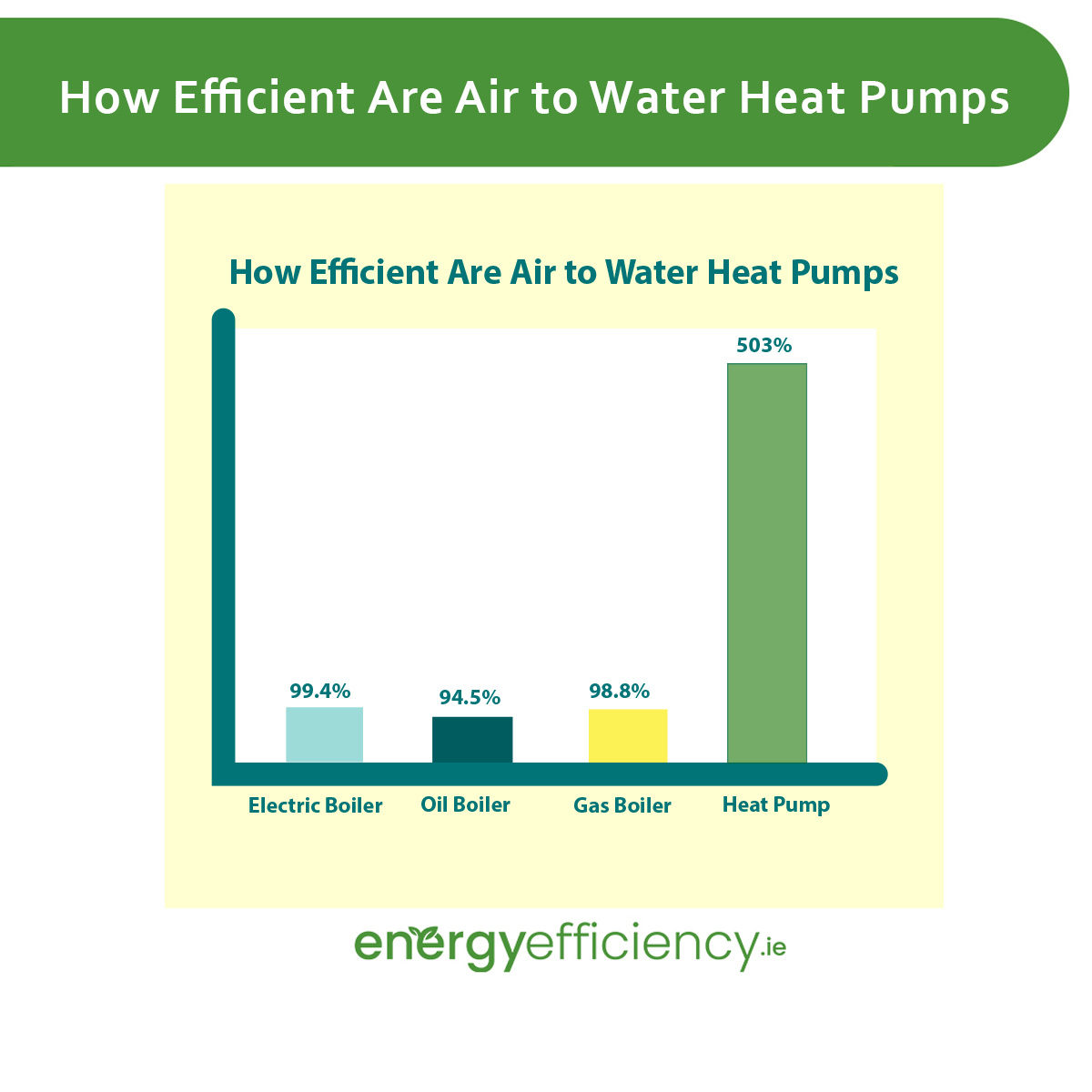
Data Source: Worcester-Bosch Gas Condensing Boilers / Grant Vortex Oil Condensing Boilers / Viessmann Electric Boilers / Vaillant Arotherm Plus Heat Pumps
Types of Heat Pumps
There are two main variations of air to water heat pump systems, a Split heat pump and a Monobloc heat pump. The main difference between the two of these is whether they have an indoor unit in addition to the outdoor unit.
Monobloc Heat Pump
In a monobloc air to water heat pump, all of the essential elements of the system are contained in the outdoor unit. This includes the refrigerant, compressor, heat exchanger, and water system. The hot water is piped from the outdoor unit back into the property.
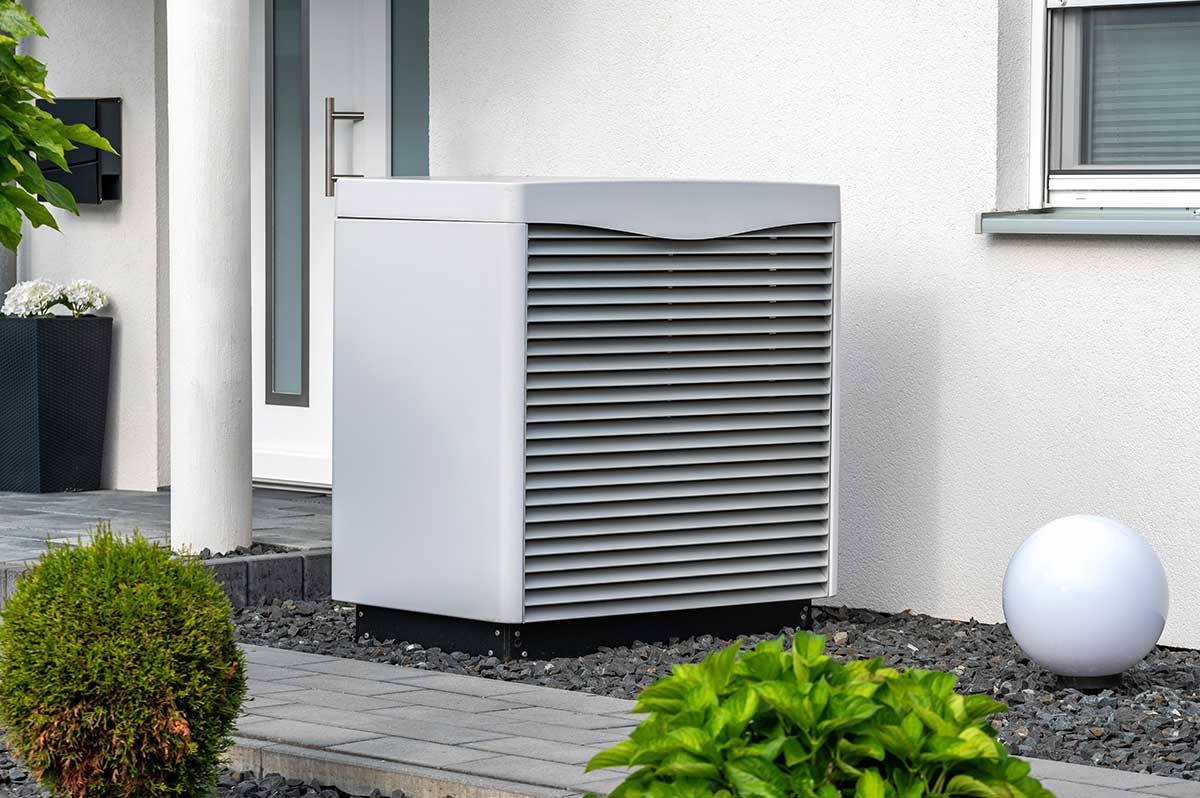
Split Heat Pump
In a split air to water heat pump, there are two separate units, an exterior unit and an interior unit. The exterior unit absorbs heat from the outside air and heats the refrigerant. This is then piped to the interior unit where another heat exchanger connects it to the indoor heating system or hot water tank.
The benefit of a split heat pump is that it allows the outdoor unit to be located further from the property than with monobloc heat pumps, reducing noise disturbance.
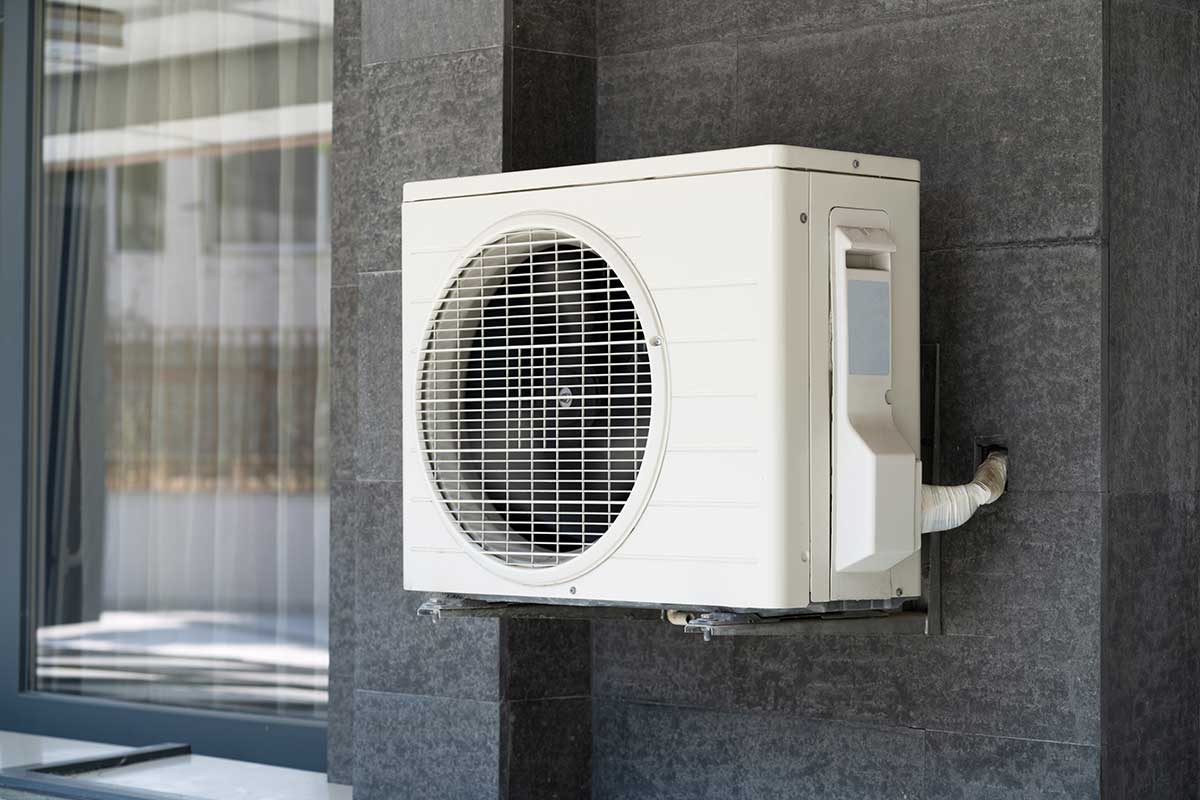
Heat Pump Components
There are multiple components to any heat pump system, some of which are common across all types, and some of which are relevant only to air source heat pumps.
What is the Cost of an Air to Water Heat Pump
The cost of a heat pump depends on numerous factors including the size of your home, the number of rooms to be heated, and the size of the system needed to deal with that.
Air source heat pumps are typically the cheapest of the three main types compared with ground or water source systems, as they require less installation work.
The average cost of an air source heat pump will be in the region of €8,000 to €17,000 before considering the SEAI grant.
The cost of having an air to water heat pump installed can also depend on whether any other renovations or upgrades are needed in your home heating system at the same time. If your radiators are not large enough they might need to be replaced, and many homeowners undertaking larger retrofits might also take the opportunity to install underfloor heating.
Heat Pump Energy Costs
Operating a heat pump will cost in the region of €500 – €1,000 depending on the size of the system, your home, and the heat levels it is set at.
What to Look for When Buying a Heat Pump
There are a number of things which you should look at carefully when choosing a heat pump model, as you will have to live with it for a long time to come.
System Size
One of the most common mistakes people can make when purchasing a heat pump is getting a system which is too small or too large in power output. An undersized heat pump will not be effective at heating your home. Rooms further away from the heat pump will be colder than rooms closer to the indoor unit.
Worse still is potentially oversizing the system. Not only will this cost you more upfront, but it will also reduce your energy efficiency and cost more to run. Heat pumps are designed with a minimum operating output. This means that an oversized system will be shutting on and off regularly as it dumps large amounts of heat rather than maintaining a steady temperature.
Aesthetics
Any air source heat pump will come with a large visible outdoor unit, so it’s good to keep in mind whether you want to look at an ugly grey block. Makers such as Daikan have become more conscious of this and are making sleeker units which blend in with the property.
Refrigerant
The refrigerant is the substance which is used in the heat transfer system of the heat pump, absorbing heat from outside and releasing it indoors, or vice versa. Refrigerants such as R-410a should be avoided due to being terrible for the environment.
Many modern systems will use R-32 as a more environmentally friendly alternative in the same class as R-410a. But this is also being edged out now by R-290 or R-744 as non-toxic, easily available alternatives.
The environmental impact of refrigerants is measured by their Global Warming Potential, with Carbon Dioxide being the baseline GWP of 1.
| Refrigerant | Type | Chemical Name | GWP |
| R-410a | HFC | N/A | 2,088 |
| R-32 | HFC | Difluoromethane | 675 |
| R-290 | HC | Propane | 3 |
| R-744 | N/A | Carbon Dioxide | 1 |
FAQs
Get In Touch
Get in touch with us today to start discovering how much heat pumps can benefit your life and home!



